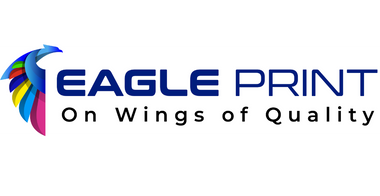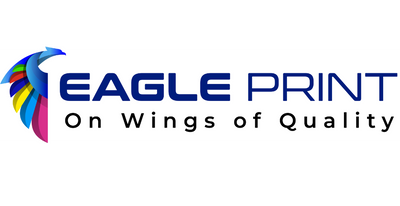Tailored for You: Custom Printing Techniques and Their Uses

Tailored for You: Custom Printing Techniques and Their Uses
Tailored for You: Custom Printing Techniques and Their Uses" is an art that brings creativity and precision together, allowing individuals and businesses to express their uniqueness. Whether you're printing a t-shirt, a poster, or a custom mug, the right "Tailored for You: Custom Printing Techniques and Their Uses" method can make all the difference. This article explores various "Tailored for You: Custom Printing Techniques and Their Uses" techniques and their uses, helping you understand the best method for your project. 🎨
Learn more about the history of printing on Wikipedia.
The Rise of Custom Printing 🖨️
Custom printing has gained immense popularity due to its versatility and the growing demand for personalized products. From promotional materials to fashion items, printing techniques have evolved to meet diverse needs. Each technique offers unique benefits, making it suitable for different applications.
One of the driving factors behind the rise of custom printing is the ability to create low-volume, high-quality designs without the need for expensive setup costs. With advances in digital technology, custom printing has become more accessible than ever before. 💡
Popular Custom Printing Techniques and Their Applications 🔍
1. Screen Printing 🌈
Screen printing is one of the oldest and most widely used methods of custom printing. It involves pressing ink through a stencil (or screen) onto a surface. This technique is particularly popular for printing t-shirts, posters, and other textiles.
Uses:
-
Custom apparel (t-shirts, hoodies)
-
Promotional items
-
Posters and banners
-
Packaging
Screen printing is ideal for large runs, as it offers excellent durability and vibrant colors. However, it’s less cost-effective for small runs due to setup costs.
2. Digital Printing 💻
Digital printing is a modern approach that involves transferring a digital image directly onto the printing surface. Unlike screen printing, digital printing doesn’t require a stencil, making it quicker and more affordable for small batches. This technique is used widely in various industries for both high-volume and short-run projects.
Uses:
-
Custom t-shirts
-
Greeting cards and invitations
-
Business cards
-
Photo printing
Digital printing offers sharp details, rich colors, and is ideal for personalized items. It's a preferred choice for on-demand printing services and custom items. 👕
3. Heat Transfer Printing 🔥
Heat transfer printing is another popular method for creating custom designs, particularly for apparel. The design is printed onto a special transfer paper and then transferred to the fabric using heat and pressure. This technique is widely used for creating custom t-shirts, bags, and even mugs.
Uses:
-
Custom apparel
-
Sportswear
-
Bags and accessories
-
Personalized gifts
Heat transfer printing is particularly useful for small to medium-sized orders, offering vibrant designs and the flexibility to print on different materials. 🌟
4. UV Printing 🌞
UV printing uses ultraviolet light to cure the ink as it’s printed, allowing the ink to dry instantly. This technique works on a variety of materials, including paper, plastic, and glass. UV printing is known for its precision and the ability to print on non-flat surfaces.
Uses:
-
Custom promotional products
-
Packaging and labels
-
Print on wood, acrylic, or glass
-
UV printed phone cases and accessories
The ability to print on a variety of materials with high durability makes UV printing a go-to solution for businesses looking to create high-quality, custom products that stand out. 💎
5. Sublimation Printing 🎨
Sublimation printing is primarily used for creating vibrant, full-color designs on fabrics and other materials. It involves turning solid dye into gas, which then bonds with the fibers of the fabric. This method is most commonly used on polyester fabrics and is known for producing vibrant, long-lasting prints.
Uses:
-
Sportswear and activewear
-
Custom home décor (pillows, blankets)
-
Mugs and personalized gifts
-
Custom bags and accessories
Sublimation printing is perfect for creating high-quality, all-over designs that are vibrant and durable. The process allows for continuous color blends without the need for multiple layers. 🌈
Which Printing Technique is Right for You? 🤔
Choosing the right custom printing technique depends on several factors such as the material you’re printing on, the complexity of the design, the order volume, and the budget. Here’s a quick guide to help you decide:
-
Screen Printing: Best for large orders and designs that require solid colors.
-
Digital Printing: Ideal for small to medium runs with complex, multi-color designs.
-
Heat Transfer Printing: Great for apparel and smaller orders that need detailed prints.
-
UV Printing: Perfect for printing on non-traditional materials like glass, wood, and plastic.
-
Sublimation Printing: Best for polyester fabrics and creating vibrant, all-over designs.
Each technique has its unique benefits, making it suitable for different kinds of projects. Whether you’re a small business looking to create custom products or an individual designing something special, understanding the differences in custom printing techniques is key to choosing the best method. ✂️
The Environmental Impact of Custom Printing 🌍
As the demand for custom printing grows, so does the need for sustainable practices. Some printing methods are more eco-friendly than others. For example, digital printing tends to use less ink and produces less waste compared to traditional methods. UV printing also offers a sustainable option as it uses UV light instead of heat, reducing energy consumption.
Eco-Friendly Practices in Custom Printing:
-
Water-based inks: A more sustainable alternative to solvent-based inks.
-
Recycled materials: Using recycled fabrics and papers for printing.
-
Energy-efficient machines: Many printing companies are switching to energy-efficient machines to reduce their carbon footprint.
By choosing eco-friendly printing methods, businesses and individuals can reduce their environmental impact while still achieving high-quality results. 🌱
Conclusion: The Future of Custom Printing 🚀
Tailored for You: Custom Printing Techniques and Their Uses is more than just a way to add a personal touch to products. It’s a growing industry that continues to innovate, offering new and exciting ways to create unique, high-quality items. Whether you're designing custom t-shirts, promotional materials, or personalized gifts, understanding the different printing techniques and their applications will help you make informed decisions.
With advancements in digital technology, the future of Tailored for You: Custom Printing Techniques and Their Uses looks promising. As more eco-friendly and efficient techniques emerge, the possibilities are endless. Embrace the power of custom printing, and bring your creative ideas to life with precision, color, and durability.
. 🌟
Internal Link:
Explore more about custom printing techniques on our Eagle DTF Printing Blog.
External Link:
Learn more about the history of printing on Wikipedia.



